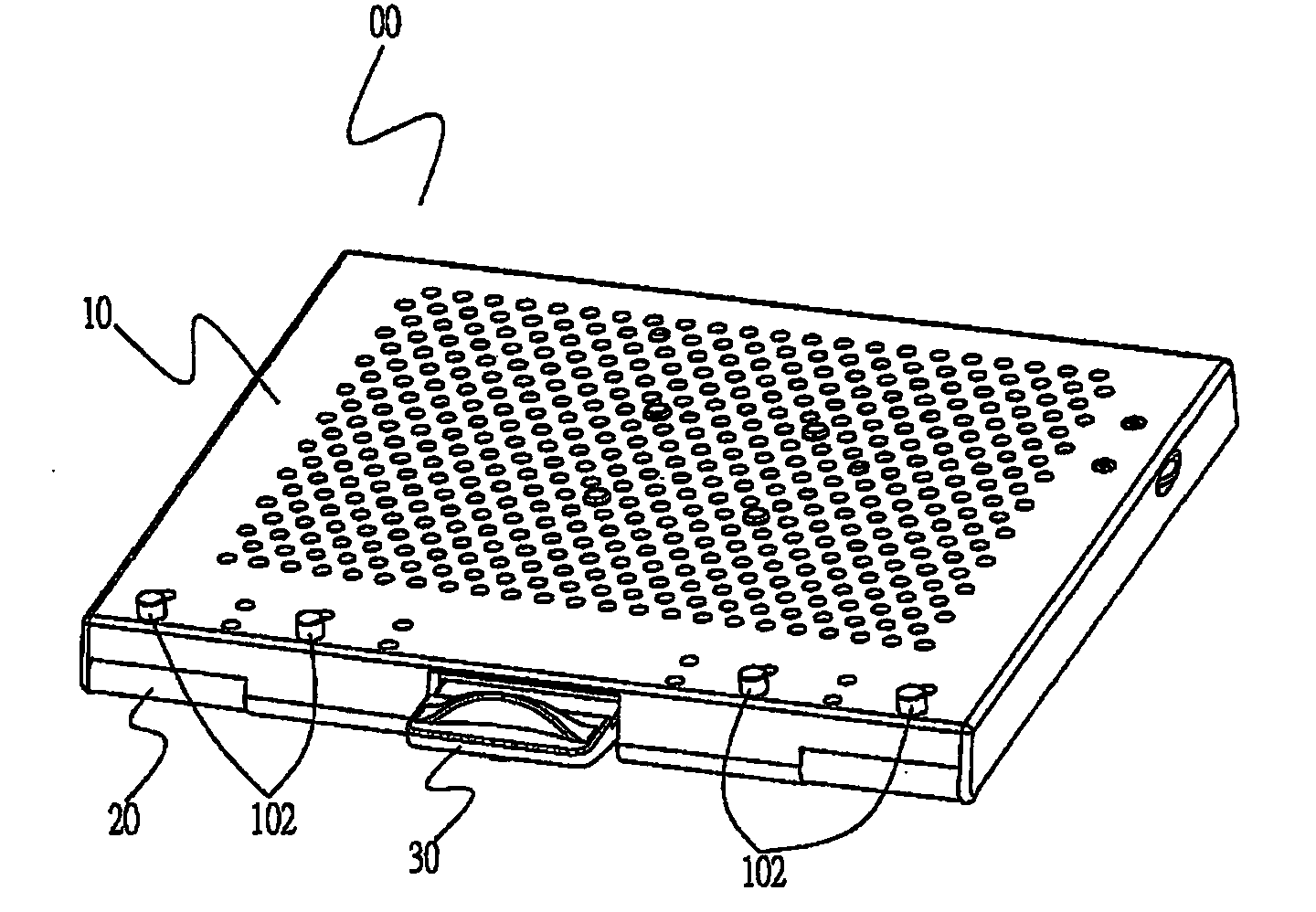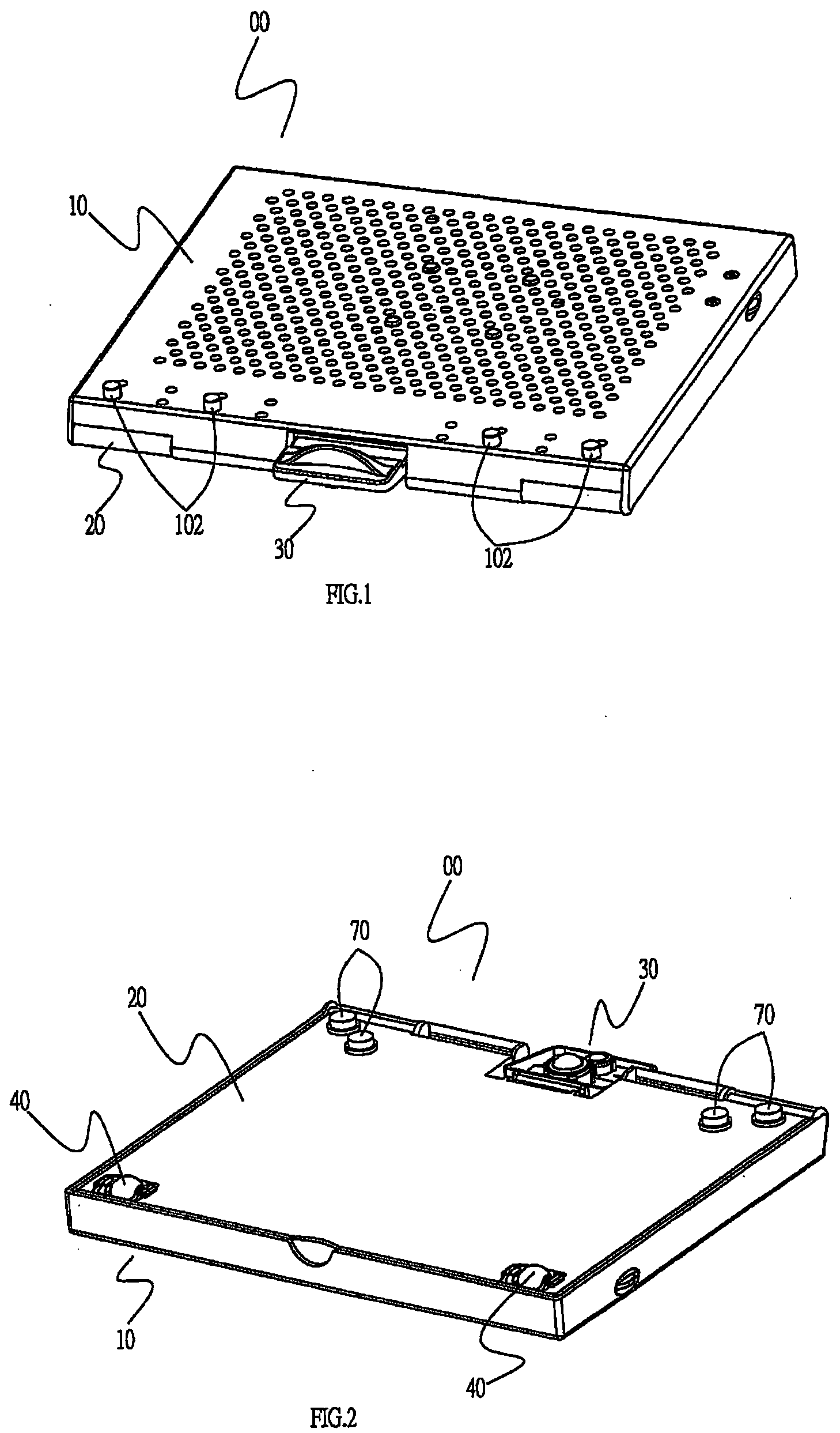Heat sink for notebook computer
- Summary
- Abstract
- Description
- Claims
- Application Information
AI Technical Summary
Benefits of technology
Problems solved by technology
Method used
Image
Examples
Embodiment Construction
[0026]Referring first to FIG. 1, FIG. 2 and FIG. 3, which disclose elevational schematic views and an exploded schematic view of a heat sink of the present invention, and it can be seen from the drawings that a heat sink 00 of the present invention comprises a perforated plate 10, a base 20, a displacement control assembly 30, a plurality of rollers 40, a plurality of fan assemblies 50, a supporting frame 60, a plurality of rubber studs 101, a plurality of antislip stop posts 102, a plurality of wire fasteners 103 and a plurality of pads 70. Wherein:
[0027]Referring together to FIG. 5 and FIG. 6B, the perforated plate 10 is used to enable a notebook computer to be superposed thereon. The perforated plate 10 is provided with a plurality of holes 11, and a plurality of antislip stop post locating holes 12. Moreover, the perforated plate 10 is further provided with a pivot 13 at each of two sides thereof, two air speed regulator fixing holes 14, two supporting structures 15 for the supp...
PUM
 Login to View More
Login to View More Abstract
Description
Claims
Application Information
 Login to View More
Login to View More - R&D
- Intellectual Property
- Life Sciences
- Materials
- Tech Scout
- Unparalleled Data Quality
- Higher Quality Content
- 60% Fewer Hallucinations
Browse by: Latest US Patents, China's latest patents, Technical Efficacy Thesaurus, Application Domain, Technology Topic, Popular Technical Reports.
© 2025 PatSnap. All rights reserved.Legal|Privacy policy|Modern Slavery Act Transparency Statement|Sitemap|About US| Contact US: help@patsnap.com



